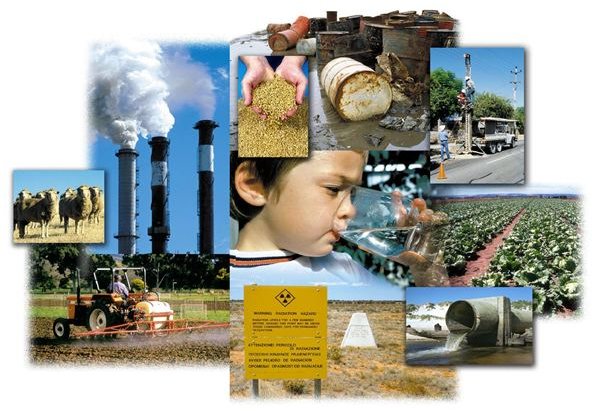Factors of Public Opinion in U.S. Environmental Policy: How We Can Make a Difference
Power to the Public
The topography of America’s environmental policy legislation is mountainous. Decisions, re-decisions, and rulings of overturned rulings of overturned rulings are common, and for those of us who are not politicians or judges, the question sometimes occurs: Are we making any difference at all? Sociologists and researchers have been asking the same questions since the 1970s, when the environmental policy of the United States government took a turn into prominence. What effect do normal, everyday people have on country’s environmental decisions?
It would be nice to assume that each of us can make a difference with our own small efforts, but where is the proof? Actually, the proof lies in well known factors that help move the tides of environmental policy. Public opinion plays a role in several distinct and unquestionable ways, enabled in large part by America’s democratic system and plain old passion. Yes, there is something YOU can do! Here are several examples of how personal actions have and will build up to affect the overall environmental policy of the United States, as shown by history and research:
Polls
Polls, one of the favorite tools of the politician—even if it is one of the most vague. Polls do not change how politicians think, but they do change which way government leaders lean and what policies or legislation they endorse. As statistics, public opinion polls can be interpreted in a variety of ways (it’s an art as well as a science) but as simple results in the hands of politicians eager for election or re-election, such polls can make a lot of difference. The great thing is that public opinion results come from completely normal people like you and me—at least when taken correctly.
A good example of public opinion polls making a different is the policy changes made by the Obama administration when President Obama gained office. In its latter stages the Bush administration had made several environmental policy adjustments that allowed government agencies like the FBI to begin projects without feedback on their environmental impact. When President Obama replaced Bush, the polls indicated that his supporters wanted him to follow through on promises he had made during the campaign regarding environmental changes, so he repealed the Bush adjustments and reinstated the previous standards.
Donations
Money makes the world go round, they say, and in America money does talk with a very loud voice. While not everyone is able to donate to politicians, agencies, or organizations, those that can make a direct and influential impact. Although donations to politicians are limited by campaign finance laws, politicians are grateful for all the donations they receive, and there is tremendous political pressure to take into account the wishes of such supporters. Unfortunately, this opens the door for bribery and corruption and a number of unhealthy activities, but it also provides a way for you to make your voice heard in the clearest language government understands. Even if you don’t have enough fund to donate directly to a campaign, there are many other ways to support groups that will in turn make the environmental issues you care about known to your senators and representatives.
While the world of donations can be a place of dangerous balance, there is also room for much good to be done! Remember, time and energy can be valuable donations, too. In politics, giving is very reciprocal–politicians will feel the need to give something back. Donating on Earth Day, donating to eco-friendly representation groups, and donating in response to your congressman’s endorsement of particularly sound policies are only a few viable ideas.
Endorsement of “Green” Business
Not only does endorsing eco-friendly business product and practices help companies, but it also encourages a healthy cycle of government participation. The circle goes like this: governments, often under pressure from voters/taxpayers, put into motion policies that encourage green business by giving businesses tax deductions, subsidies, grants, and other forms of support. Businesses use this support to create eco-friendly products or use more environmentally sound materials, and take pains to advertise the fact and draw in eco-minded people. People who endorse these practices by buying the products or commenting on the companies’ new directions encourage their governments to believe that such programs are successful and that more should be implemented.
Also, the simple use of green services and eco-products will eventually find its way back to the government through stats on consumer spending and economics, so the message finds its way in the end.
State Osmosis

Sometimes all it takes is one state to pass environmental legislation or endorse eco-friendly behavior, and soon other states are also jumping on the green bandwagon. Bordering states often cave into demand when one of their brothers takes action, moving under peer pressure or simple logic to mirror the decision. Before long, a whole chain of states can follow suit, and often the policies become federal legislation as well. As the public, we don’t always need win over the whole country–at times just our state will do, and a dozen other states that were waiting for someone to make the move will join in.
An excellent example of this can be seen by looking at California. The west coast state, tending to be more proactive in ecological matters, signed at bill into law (with Governor Davis at the helm) in 2002 intended to reduce C02 emissions from automobiles. Although the law was criticized as being unfair and unhealthy for California’s economy, in the following years a number of states over in New England, due to yet more provinces in nearby Canada making similar decisions, also passed their own versions of emission-lowering laws, including New Hampshire and Massachusetts. Together, the states were able to learn from each other and develop eco-friendly laws more fitting to their economies and manufacturing situations. The Kyoto Protocol is an example of how this can also happen internationally.
Demonstrations
Demonstrations are a two-edged sword. On one hand, they are a highly effective way to spread viewpoints and let other members of the public and government organizations (including politicians!) know what you think. The other hand is more negative: others may be turned off to your message if they find the demonstration annoying, while some radical demonstrations have broke the law or provoked unwholesome hostility. Unfortunately, demonstrations that end in disaster are often far more effective are winning the attention of both the government and other members of society, as seen with the death of David Chain.
So while demonstrations can cause swift action and unprecedented attention, they can also be dangerous, tending toward misunderstanding or chaos. When looking for a good model to follow, you may want to remember Julia Hill, who managed to negotiate protection for part of an old growth forest through her own radical demonstrations. An important side note, however: demonstrations also take a large amount of efficient organization to be effective! Be sure you plan ahead! Signs, flyers, and passion are all important ingredients, along with a good turnout–nothing makes politicians look twice like a large number of people.
Issue Attention Cycles
In the 1970s, when environmental awareness was on the rise in America society and it was becoming more and more popular to champion causes, a sociologist by the name of Anthony Downs formed theories on what become known as Issue Attention Cycles. These are cycles that occur naturally in the realm of public opinion, mass media, and government, moving from acknowledgement of the issue to some type of resolution. What Downs discovered is that these natural cycles tended to end with less change than most people believed, that the public as a whole was often contented with only superficial change and that interest in an idea—particularly environmental issues—died down after a certain time.
Downs separated the process into five different stages, from the unknown beginning where the issue is only known to professionals, through the rapid rise in public awareness due to sudden events and group fervor, onto the decline of mass interest as the public realizes the time, costs, and effort involved in making changes, and finally to the loss of interest, when the public moves onto a newer, more exciting issue and often leaves the old issue behind without a clear solution.
While Issue Attention Cycles are a natural part of society and a integral factor in the relation between public opinion and government policy, they can be broken and do not always end without closure. The most important thing for the public is to be aware of Attention Cycles and always seek a proper solution to the problem before moving on–and to realize that as far as widespread attention and government decision go, they only have a short time to act in a meaningful way.
Other Resources
To find out more about the relationship between public opinion and environmental policy, you should check out the excellent Environmental Politics and Policy, by James Lester. If you want more information on Issue Attention Cycles, just go to Anthony Downs’ website, www.anthonydowns.com. To look at trends as a whole, you may be interested in Green Giants? by Norman J. Vig and Michael G. Faure, and to check out President Obama’s current environmental policy, go to https://www.whitehouse.gov/agenda/energy_and_environment/.
